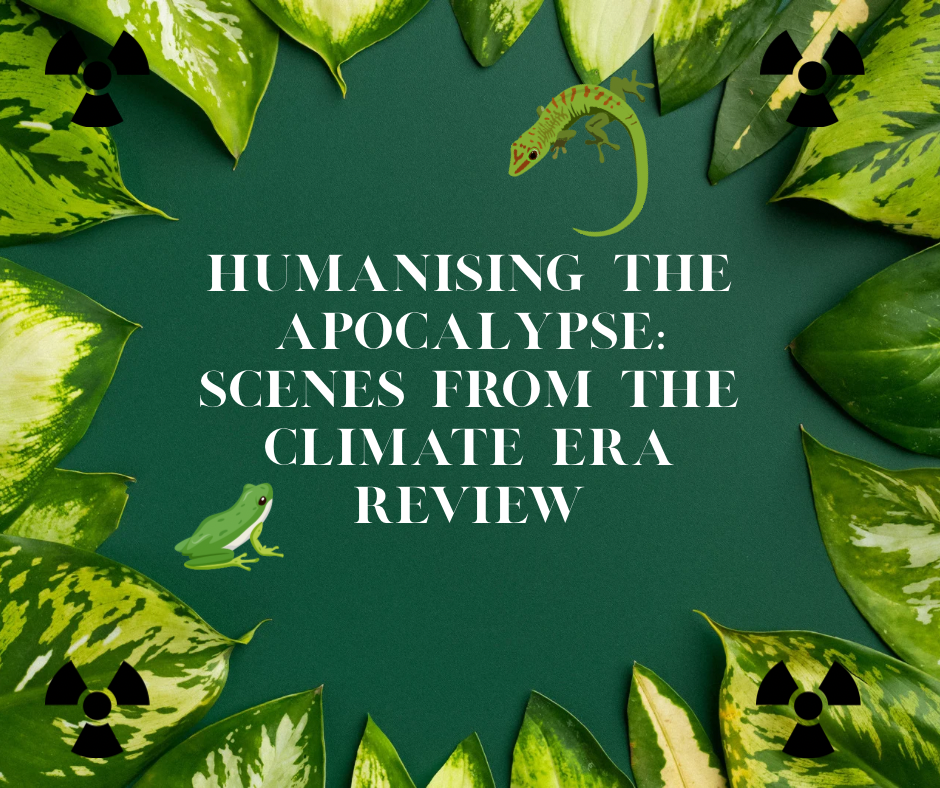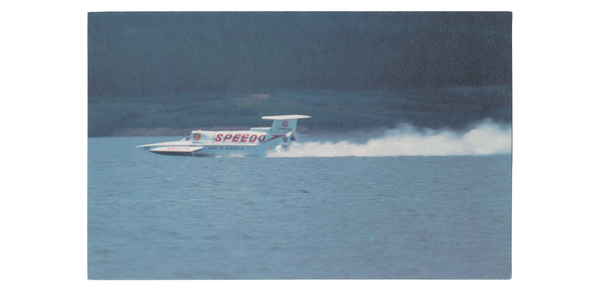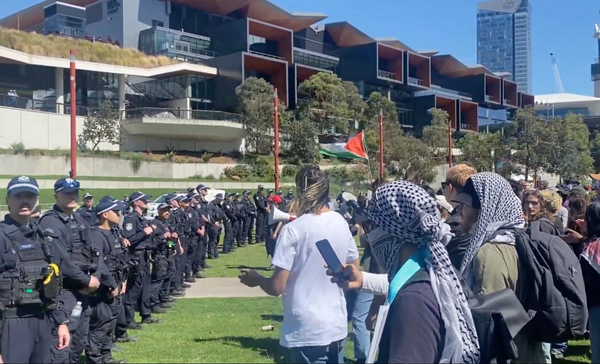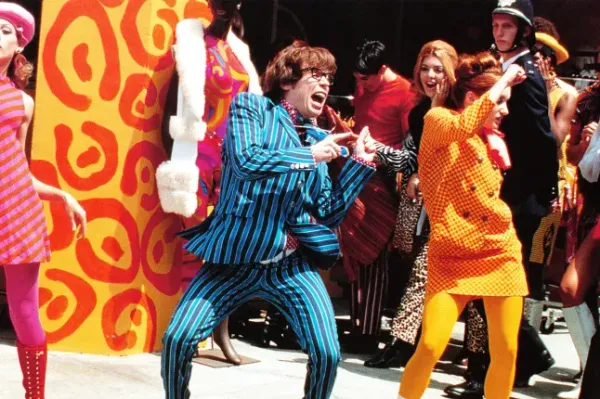Humanising the Apocalypse: Scenes from the Climate Era review

I know what you’re thinking: another bloody climate play. Hard pass.
But if there’s just one ‘climate play’ you should take a chance on, it’s Scenes from the Climate Era. Over the course of 65 short scenes, writer David Finnigan dissects the past, present, and future of humanity in a changing world. From boardrooms and therapists’ offices to Public Cooling Centres and a beach that doesn’t exist yet – via the question of whether it’s ethical to add a child to this world – Finnigan zooms in on the details of what he terms the Climate Era, asking what happens after the supposed end of the world.
This micro-scale writing is what makes Climate Era so powerful and digestible. Climate change is too big and broad and terrifying to think about – we spiral, clutch at straws of solutions, or await some kind of doomsday that we believe to be inevitable. In contrast, a character’s stream of consciousness or a conversation between friends is familiar and easy to connect to, preventing the audience from going into climate-distress-induced shutdown. Characters make jokes in serious meetings and argue about music at a party. The pilot of a life-saving mission to cool the planet de-stresses after work and kids on a school trip are rowdy and restless. A conservationist calls the last frog of its kind by the name his little nephew has given it. By carrying this connection over into the climax of the show, placing us in characters’ heads as they feel the brunt of climate shocks, Finnigan reminds us what’s at stake without the need for a preachy ‘come to your senses’ chat. The result is equal parts devastating and cathartic: the things I’m most terrified of have just happened, and the show continues into the ‘after,’ and life keeps going.
Integral to the storytelling is, of course, the cast of just five tasked with presenting it to the world. The jam-packed nature of the show – 80 minutes to get through all 65 stories – means Violette Ayad, Nic English, Meg Hyeronimus, Abbie-lee Lewis, and Brittany Santariga have their work cut out for them. Climate Era isn’t all doom and gloom and seriousness: many scenes are fun, some silly, others awe-inspiring. The fine balance between all these elements is key to its watchability, and the agility of the cast, jumping back and forth between often contrasting or conflicting emotions from one scene to the next, is highly impressive. Beyond this, their plain, matter-of-fact delivery throughout most of the show makes it hit that much harder when the show reaches its peak and their objectiveness gives way to panic.
It’s a little funny to see a Belvoir St production from straight on, rather than in the cosy corner stage of their converted building in Sydney. Whilst some of the intimacy of that space is irreplicable anywhere else, Nick Schlieper’s open-ended set and lighting design makes for a seamless transition to this landmark eleven-city tour. A simple table and chairs become an endless array of settings, guided by the brief orientation spoken at the start of most scenes. The uncluttered design also ensures that the visuals don’t overshadow the humanity of the storytelling, keeping the characters themselves as a focal point without distraction. Trickles of falling sand throughout the show could allude to multiple things – an hourglass, or the formation of new beaches, or a signal to pay attention. In the end, the sand translates the emotional weight of the show’s climax into the physical world, amplifying its impact by orders of magnitude. Most scenes leave no trace: the set is rearranged, we don’t hear from those characters again, and the show continues. At its most intense point, though, the sand allows for a proper aftermath – an acknowledgement of the irrevocable impacts of climate change.
At its core, Climate Era isn’t just a climate play. It’s a play about friendship and love, loss and grief, joy and laughter, despair and fear. It’s about personhood and the things that make us human, and how they play out against the backdrop of a changing world. It’s a play we can see ourselves reflected in – the things we do and think about on a daily basis, and the things we’re worried about for the future. On the other hand, it is a climate play, and it’s at the top of its game. It challenges us to rethink the way we view climate change: not as a singular crisis point, but a historical period spanning generations to come. Not as some massive abstract eventuality, but a tangible reality affecting the minutiae of your (yes, your) life. Not as the end of the world, but something that, with time and hard work, our distant descendants will someday emerge from the other side of.
We’re given ways to take action, but not blamed for things hundreds of times bigger than ourselves. Protest and mutual aid are examined through a refreshingly realistic lens. Hope is important, but it’s not going to save us. We leave the theatre informed, but not overwhelmed. Scenes from the Climate Era shows us real people in the real world, breaking through the immobilisation of climate distress to remind us to care.




